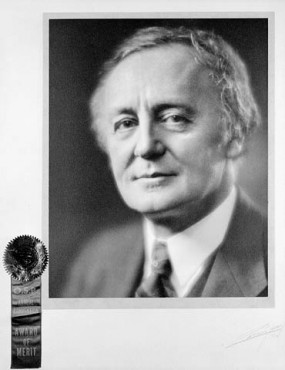Early scholars believed that Indigenous cultures were vanishing because of the terrible devastation of European diseases, such as smallpox, influenza, and tuberculosis. Because of this, anthropologists were motivated to rapidly record orature. They further believed that Indigenous cultures would vanish under the strong pressures to assimilate, which were spearheaded by missionaries, educators, bureaucrats, and incoming settlers. Because so few Indigenous people were literate in English at the time, white researchers did much of this recording. However, Indigenous men trained as missionaries often recounted traditional stories and Indigenous men sometimes worked for university and museum anthropologists to collect stories.

Marius Barbeau (1942): one of the first anthropologists focused on Indigenous cultures in Canada. J. Alex Castonguay / Library and Archives Canada: C-034447
Amateur collectors sometimes recorded stories in a style that accorded with their preconceptions that Indigenous languages were flowery or metaphoric by nature—a style that now often seems dated, condescending, and even racist. Indigenous stories were often reworked for white children to read. This meant that anything to do with sex was omitted and stories were simplified.
Anthropologists went in the other direction, transcribing stories literally in order to facilitate linguistic study. However, anthropologists sometimes ignored any orature that recounted post-contact events, mentioned implements such as guns, expressed political opinions, or showed influence from European beliefs or stories, thereby reinforcing a false sense of static authenticity in order to make the stories seem more traditional (see Maud). Although a decidedly Eurocentric perspective informed their work—since they held on to the superiority of European scholarly methods—they nevertheless worked conscientiously to learn Indigenous languages and to record the orature of the Indigenous peoples.

Franz Boas, 1908. Photographer unknown. Wikimedia / Popular Science Monthly 72 (1908): 288.
Nevertheless, these early collections of stories provide rich resources for Indigenous peoples interested in reclaiming their culture. For example, Franz Boas, the founder of American anthropology, collected stories from many cultures on the Pacific Coast of Canada and published them in German in 1895. The editors of the English translation of Boas’ Indian Myths & Legends from the North Pacific Coast of America consulted with experts in each language group to ensure the accuracy of the translations and to make sure that they retained important cultural information. This approach exemplifies the contemporary ethical standard of acknowledging and working with Indigenous cultures. For understanding stories, it is important to know who collected them, how, and why. Ralph Maud’s history of myth-collecting in British Columbia, A Guide to B.C. Indian Myth and Legend, gives a good overview of the range of collectors found in just this one province.
Indigenous writers also textualized Indigenous stories, either from their own people or from other nations. George Copway included Ojibwa (Anishinaabe) traditional stories in his memoirs. E. Pauline Johnson, although she was Mohawk, collected Squamish stories from Joe Capilano (Su-á-pu-luck) and his wife Agnes (Lìxwelut). These stories were published in 1911 as Legends of Vancouver, although she had wanted the title to be Legends of the Capilano to honour the storytellers. Edward Ahenakew (Cree; 1885-1961), an Anglican missionary, collected the stories of Chief Thunderchild, which were published as Voices of the Plains Cree (1973).
Works Cited
- Maud, Ralph. Transmission Difficulties: Franz Boas and Tsimshian Mythology. Vancouver: Talonbooks, 2000. Print.
- Maud, Ralph. A Guide to B.C. Indian Myth and Legend: A Short History of Myth-Collecting and a Survey of Published Texts. Vancouver: Talonbooks, 1982. Print.








 ©
©